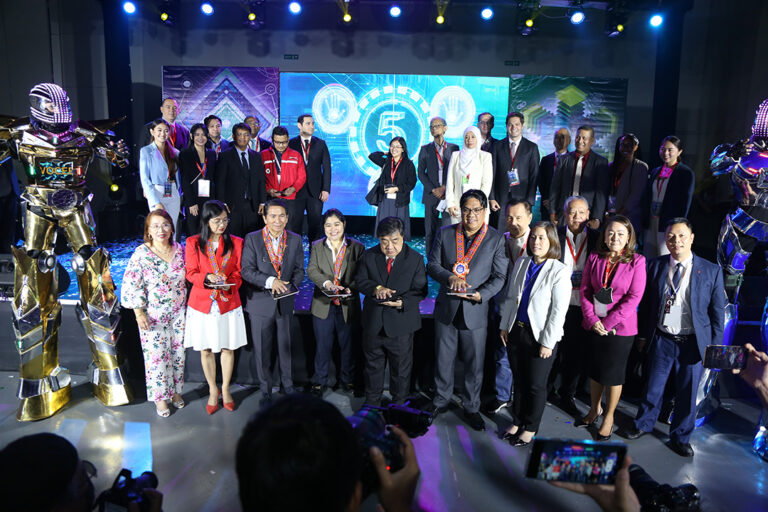by Henrylito D. Tacio
Every March 8, the International Women’s Day is celebrated in many countries around the world. It is a day when women are recognized for their achievements without regard to divisions, whether national, ethnic, linguistic, cultural, economic or political.
Since those early years, International Women’s Day has assumed a new global dimension for women in developed and developing countries alike. The growing international women’s movement, which has been strengthened by four global United Nations women’s conferences, has helped make the commemoration a rallying point to build support for women’s rights and participation in the political and economic arenas.
Women own half of the sky, so goes a saying. And yes, they can be good – if not great – leaders. It takes guts, sheer determination, and strength to become one. As Rosalyn Carter, former First Lady of the United States, puts it: “A leader takes people where they want to go. A great leader takes people where they don’t necessarily want to go, but ought to be.”
“Leadership is hard to define, and good leadership even harder,” said Indra Nooyi, former chief executive officer of PepsiCo. “But if you can get people to follow you to the ends of the earth, you are a great leader.”
Sheryl Sandberg, chief operating officer of Facebook, has the same view. “Leadership is about making others better as a result of your presence, and making sure that impact lasts in your absence.”
“Leadership is not a person or a position. It is a complex moral relationship between people based on trust, obligation, commitment, emotion, and a shared vision of the good,” said Joanne Ciulla, an author and educator.
In the United States, 15% of the chief executive officers are women, according to the Fortune 500 list. “The companies that boast a higher representation of women on their boards outperform the organizations that don’t by a notable degree,” reported naturalhr.com on why the world needs more women in leadership roles.
According to some studies, the global share of women in senior management roles is increasing incrementally, with 90% of global companies having at least one woman in a senior management role in 2021.
“In today’s world, women may not always realize their potential, and once unleashed, they have a direct route to success. When they find themselves in a leadership role, their capability and abilities are undeniable,” naturalhr.com stated.
But becoming a leader is no bed of roses. “One of the criticisms I’ve faced over the years is that I’m not aggressive enough or assertive enough or maybe somehow, because I’m empathetic, it means I’m weak. I totally rebel against that. I refuse to believe that you cannot be both compassionate and strong,” said Jacinda Ardern, the current prime minister of New Zealand.
Before Ardern, there were other New Zealander women who held the same position. Jenny Shipley became prime minister for two years and two days: from December 8, 1997 to December 10, 1999. Helen Clark followed her: from December 10, 1999 to November 19, 2008.
Australia elected Julia Gillard as its prime minister from June 24, 2010 up to June 27, 2013.
Asia, the world’s largest continent, has several women who have become heads of state and government. Let’s take the case of the Philippines, for instance, which have two female presidents already.
Corazon C. Aquino holds the record as the first Filipino woman president after a snap election. She held the position for six years and 126 days (from February 25, 1986 up to June 30, 1992).
Gloria Macapagal-Arroyo (GMA), daughter of former president Diosdado Macapagal, was the country’s second female president, a position she held the longest: 9 years and 161 days. She was president from January 20, 2001 up to June 30, 2010.
GMA was vice president before she became president. Leni Robredo was elected vice president during the time when Rodrigo R. Duterte was president. The current vice president, Sara Duterte-Carpio, is the daughter of the former president.
Other Asian countries also have their shares of female heads. Megawati Sukamoputri was president of Indonesia for 3 years and 89 days: from July 23, 2001 to October 20, 2004. Yingluck Shinawatra was prime minister of Thailand for 2 years and 308 days.
Park Geun-hye was president of South Korea for 4 years and 13 days: from 2013 to 2017.
Sirimavo Bandaranaike was prime minister of Sri Lanka three times: July 21, 1960 to March 27, 1965; May 29, 1970 to July 23, 1977; and November 14, 1994 to August 9, 2000. Another Sri Lankan female president was Chandrika Kumaratunga (1994-2005).
India’s Indira Gandhi was prime minister two times. For more than 11 years, she was India’s head: from January 24, 1966 to April 24, 1977. She became prime minister again on January 15, 1980 until she was assassinated on October 31, 1984.
Bangladesh also has a female president in Sheikh Hasina. She became such on June 12, 1996 until July 15, 2001. She was re-elected on January 6, 2009 and still holds the position today.
Nobel Prize laureate Aung San Suu Kyi was the state counsellor of Myanmar from April 6, 2016 up to February 1, 2021. The current president of Nepal is Bidya Devi Bhandari, who was elected to such a position on October 29, 2015.
Halimah Yacob is the incumbent and eighth president of Singapore. It is a position she held since September 4, 2017. Prior to her presidency, she was the country’s parliament speaker.
Pakistan’s Benazir Bhutto was the first democratically female prime minister of a Muslim majority country when she was elected as such in 1988 and later in 1993. She was also the first leader of the world who gave birth to a child while serving in office.
Israel had a famous leader in Golda Meir. She became the fourth prime minister on March 17, 1969 and ended her position on June 3, 1974. She held the record as the first woman to become head of government in her country. — ###
google.com, pub-4264550707369682, DIRECT, f08c47fec0942fa0








